Pontederia cordata
(Pickerelweed)
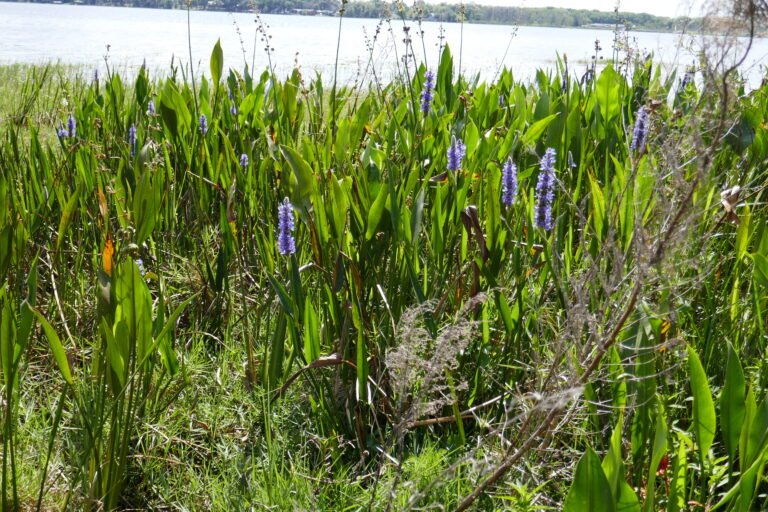
Common Names, Latin Name and Family
Its common names are pickerelweed, lance leaf pickerelweed, pickerel weed, and pickerel rush.
Its Latin name is Pontederia cordata.
It is in the Pontederiaceae, water-hyacinth, family of plants.
Form
It has a clump forming habit and spreads by short rhizomes. The clumps grow larger each year and colonize, but it is not considered to grow aggressively.
It attains a height of approximately three feet above the water, or mud.
Leaves
Its leaves grow on long, fleshy stalks, are arrowhead shaped, and are three to seven inches in length.
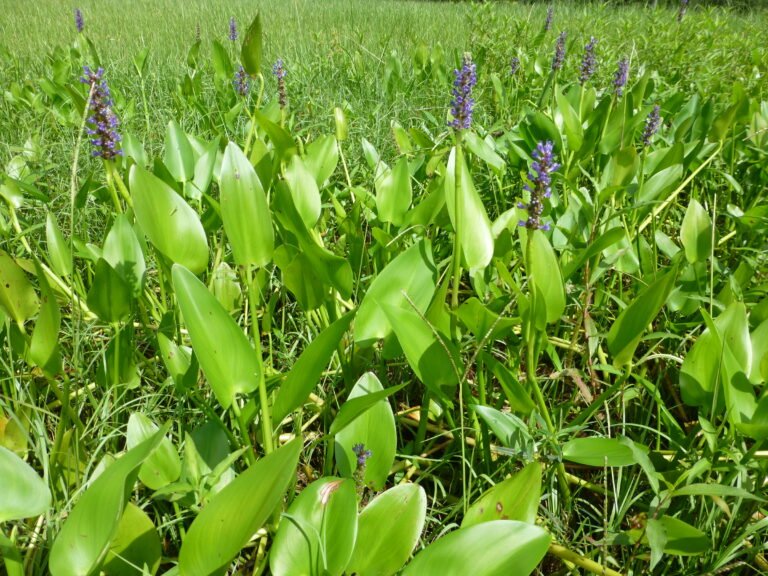
Flowers
Its, deep purple-blue, flowers, which grow on conspicuous spikes, appear in late spring and continue blooming until early fall.
The flower spikes grow on fleshy stems, and are six inches in length, purple-blue, and rarely white.
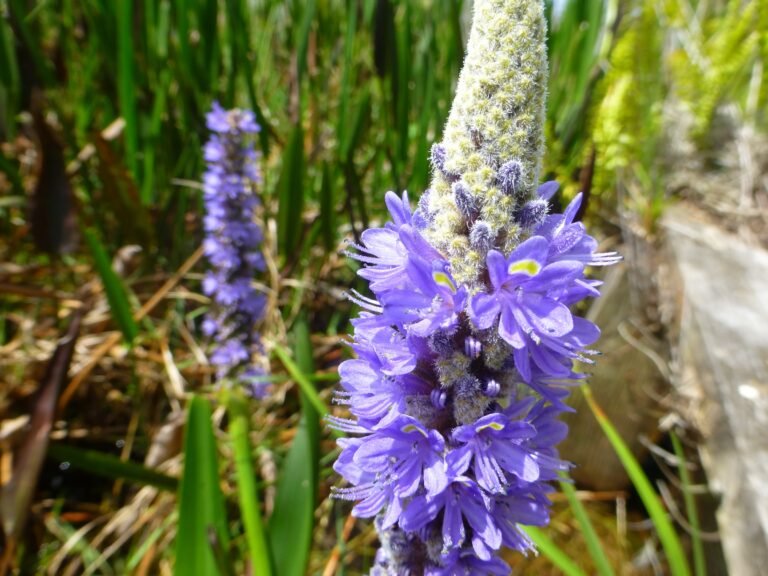
Fruit
Pickerelweed seeds are small, one-seeded fruits that are clustered tightly along the flower spike, once the flowers have been pollinated.
When immature the fruit is green and gradually turns to to tan and light brown as it matures.
Habitat
Pickerelweed occurs naturally in streams, marshes, wet ditches, ponds, lake margins and other riparian areas.
Native Range
In Florida pickerelweed has been documented for every county except Charlotte, Monroe Mainland, and Suwannee Counties.
It is native to AL, AR, CT, DC, DE, FL, GA, IA, IL, IN, KS, KY, LA, MA, MD, ME, MI, MN, MO, MS, NC, NH, NJ, NY, OH, OK, OR, PA, RI, SC, TN, TX, VA, VT, WI, and WV.
Landscape Use
Pickerelweed needs constant water. It has a clump forming habit and spreads by short rhizomes. The clumps grow larger each year and colonize, but it is not considered to grow aggressively.
It attains a height of approximately three feet above the water, or mud.
It is ideal for a boggy area of a green space or can be grown in a small pond or container.
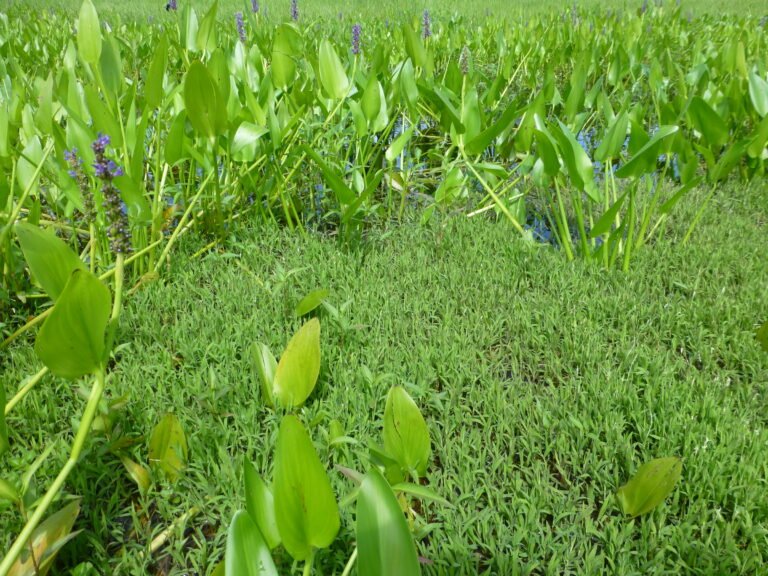
Wildlife Use
The blooms provide nectar for a number of insects including bees, wasps, and butterflies.
The red, sticky fruit is considered an important wildlife food and is eaten by ducks and other animals.
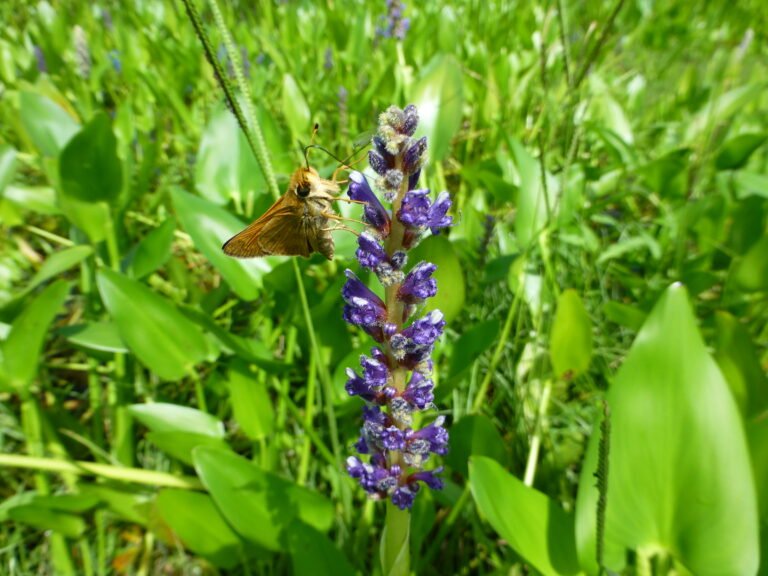
Human Use
Young, unfurled, leaves of pickerelweed are edible and can be added to salads or boiled for ten minutes and served with butter.
Each fruit contains a single starchy seed which, in addition to the leaves, is edible.
The seeds are very nutritious and can be eaten out of hand, dried, or added to cereals. They can also be roasted and ground into flour.
Please try with caution because one never knows how a person will react to a new food. I suggest trying one and making sure you don’t have a reaction. Also make sure you have positively identified the plant as pickerelweed.
Propagation
It is easy to propagate through root division, and may be divided during the blooming season. Some native plant nurseries, and pond supply stores, in central Florida carry pickerelweed.
It is actually much easier to locate a pond and put on your wellies and get a few to transplant.
Bibliography
Taylor, Walter Kingsley. The Guide to Florida Wildflowers. Taylor Publishing: Dallas, TX 1992
Wasowski, Sally. Gardening with Native Plants of the South. Taylor Publishing: Dallas, TX 1994
Peterson, Lee A. Peterson Field Guides: Edible Plants. Houghton Mifflin: Boston 1977
Next Article: Pokeweed
